I spent a year in outer space on the International Space Station. The experience still chokes me up — here's what my days looked like.
- Oops!Something went wrong.Please try again later.
Mark T. Vande Hei, 55, is a NASA astronaut who spent a year in space orbiting Earth.
He just returned, and didn't expect his term to last 355 days, but was prepared for it.
He said his days included meetings and experiments. On the weekends, they had movie night.
This as-told-to essay is based on a conversation with Mark T. Vande Hei, a 55-year-old NASA astronaut. It has been edited for length and clarity.
Before working at NASA, I graduated with a master's in applied physics from Stanford and was a physics professor at West Point. One day during my long career in the US Army, a senior Army astronaut came to an Army Space Operations conference looking to find someone to work in the astronaut office as part of an agreement to broaden the experience base of space operations officers in the Army.
I completed my training to become a NASA astronaut in 2011. In March, I returned to Earth after spending 355 days in orbit aboard the International Space Station. I'm officially the American who's spent the most consecutive days off of our planet.
Before our launch, there was a lot of uncertainty as to how long the spaceflight would be. At first, they told me that it could last up to 355 days, but that didn't become official until about halfway through the flight. Since my wife and I knew it was a possibility, we planned on my being away that long. My previous spaceflight had lasted about six months, so I saw this longer, latest one as a unique type of challenge.
The journey up to the ISS in the Soyuz was surprisingly smooth. Even though watching a launch from the ground involves a lot of light and noise, on the spacecraft itself, you pass the speed of sound so quickly that you leave all of that noise behind. The predominant sound was that of the pumps whirring to push the fuel out the back end.
When you first get to the ISS, it takes some time to adapt to the fact that the room you're in is constantly falling toward Earth
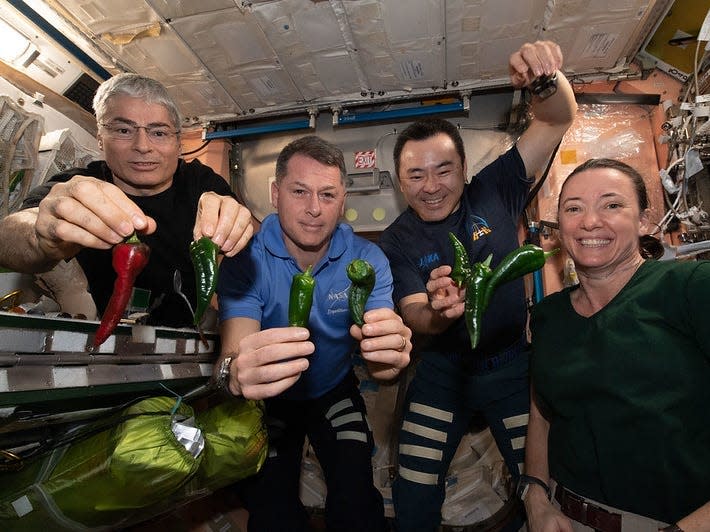
You quickly realize that, on Earth, there are a lot of things you do each day that don't require conscious effort. So when you're in orbit, you have to relearn how to do them. For example, if you don't pay attention to the procedure on how to go to the bathroom, you could end up with a messy situation. When you sit down to go on your laptop, it's important to always anchor your feet to the floor somehow, or else you'll end up floating to the ceiling.
The ISS is about the size of a six-bedroom house, but you can go days without seeing one of your six or seven roommates. Basically, the ISS was built in parts, and each part, or module, can be isolated and closed off if an emergency were to occur. On this latest flight, the Russians added two new modules, so the ISS now seems closer to a seven-bedroom home.
Most weekdays start between 6 and 7 a.m. GMT
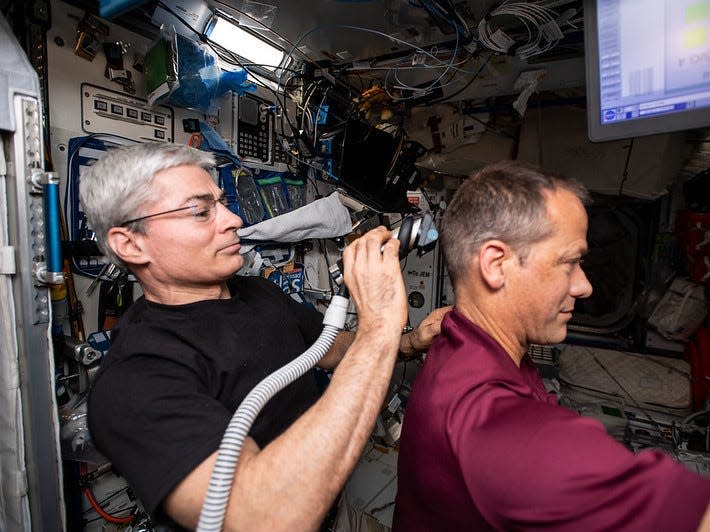
We're scheduled to wake up and have breakfast before the 7:30 a.m. daily-planning conference. In these sessions, we check in with all of the ground-control teams in Japan, Russia, Europe, and the US. During the day, you have one hour for lunch, and then two-and-½ hours for exercise — on board, we have a resistive-exercise device, a stationary bike, and a treadmill. Our bodies adapt well to floating, so it's important to exercise to keep our strength and bone density at a healthy level. We spend most of our days completing different tasks the teams on Earth set out for us.
On our team's schedule, there's a row with each astronaut's name and a horizontal line that moves forward slowly throughout the day. It guides us on what we're supposed to be working on and helps us stay on track. My favorite part is when I get to work with the other astronauts, but often we have separate tasks. If you happen to get ahead on your own work, you can go and help someone else, which is always nice.
During this latest flight, we helped conduct hundreds of experiments — whether they happened behind the panels or on ourselves
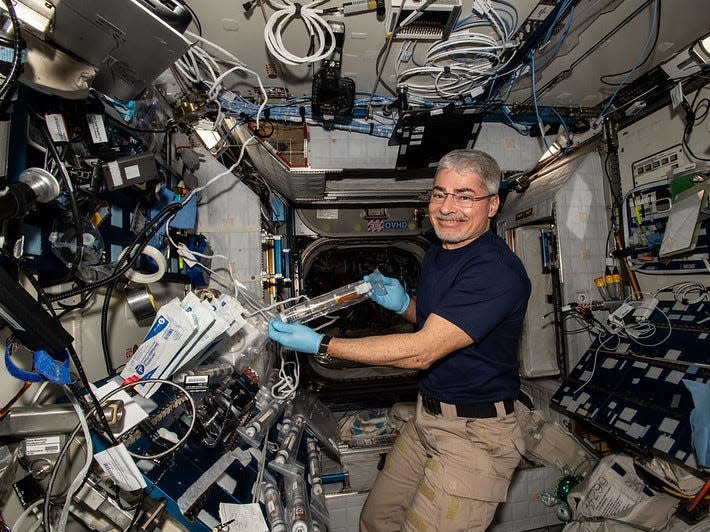
I see my role more as the laboratory technician than the scientist because I facilitate the success of the experiments more than taking down data, analyzing it, or writing the reports.
Within the team on board, there are surprisingly few "specialists." With the extended length of flight, we've realized that being a generalist is important because oftentimes the plan will change during our time up there. So you often need people who can do a variety of tasks effectively.
Other than meetings, experiments, and maintenance around the station, spacewalks take up the rest of the day
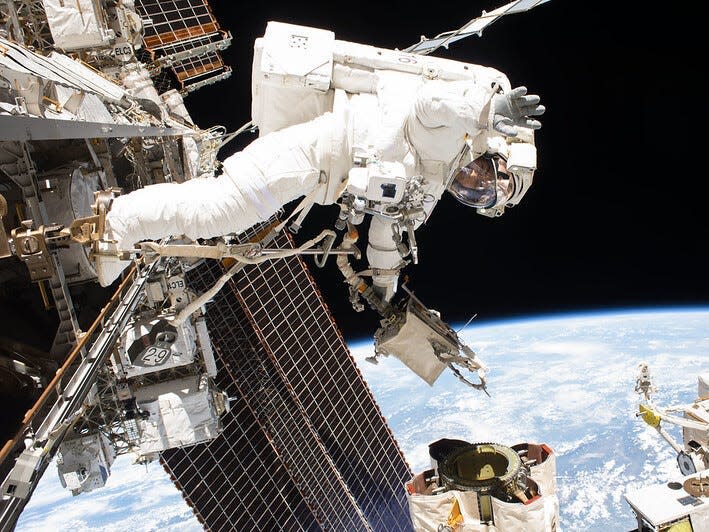
For example, we've been upgrading and adding solar arrays, which are on the outside of the ISS. The ISS is solar-powered, so it's important that we have consistent power. Though I didn't go out on a spacewalk myself during this latest flight because of a pinched nerve in my neck, I have in the past.
Being in space is like an extended fall toward the planet, with you and everything around you falling at the same rate, and no interference from wind. That's exactly what being in orbit is.
During the week, the workday goes on until about 7:15 p.m., when we finish with another planning meeting.
On the weekends, we usually had time off, other than about 3 hours of house cleaning — I love to tell school kids that
Every Friday or Saturday, we had an entire-crew dinner, and then on Sundays, we would all watch a movie together. Each week, a different astronaut got to choose whichever one they wanted: One of my choices was "Yesterday," with all the Beatles songs.
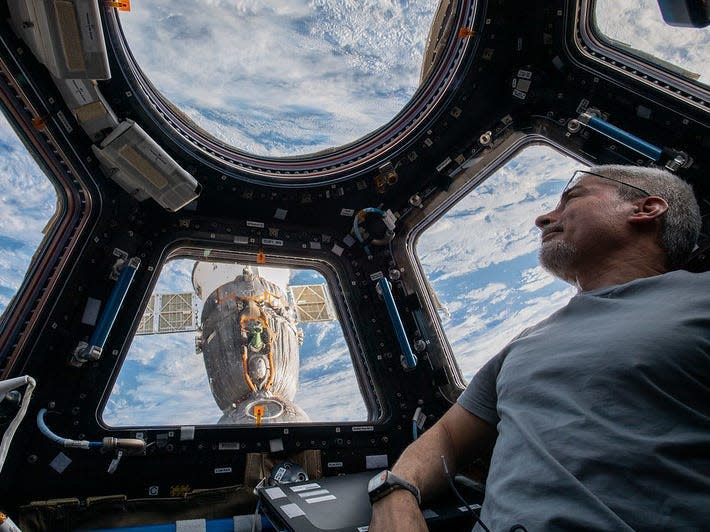
During the flight, I talked to my wife every day, and my kids usually every weekend. I got to reconnect with a lot of relatives, too. It's a pretty cool situation when you call someone and they're blown away by the fact that you're talking to them from outer space. Also, I started to meditate every day, and often, I would do it sitting at the window looking out at planet Earth.
I still get pretty choked up thinking about it. It all really is a unique experience.
Read the original article on Business Insider

